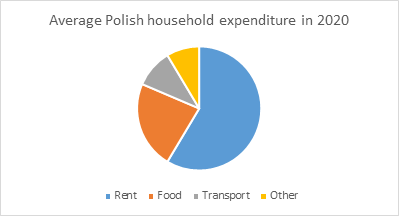Visual aids: the what, the when and the how
1. Main Types of Visual Aids
Now, let us look at different types of visual aids. We can generally divide these into three groups:
-
Graphic
aids:
charts, graphs (line graphs, bar graphs, circle graphs/pie charts, organizational
charts, and flow charts), chalkboards, posters, flip charts, pictures, drawings
and sketches. Charts and graphs are most often used to show numerical data.
When incorporating them into your speech, be sure to double check your numbers.
Moreover, tables and charts should always be discussed when you show them. The
discussion can be short, but do not assume that your audience will pay
attention to the aid or see the significant data in it. You must provide the explanation. Flip charts are practical when you
are presenting to a smaller group and you want to be able to change or modify
things as you go. Remember to write clearly, not too much on one page.
Here are some examples:
Fig. 1 A bar graph (adapted from Szczuka-Dorna, Vendome)
Fig. 2 A Circle graph (pie chart)
-
Three-dimensional aids: full-scale objects or models. These are
basically anything that you care to bring with you to show to your audience,
from small-scale objects to models of large buildings, for example. Again, you
should make sure the objects you present will be visible to the audience, and
really enhance your presentation.
- Projected aids: such as PowerPoint, Keynote (for Mac), Prezi and Google Slides. In the group we must also include separate audio and video recordings that are played to the audience, and which should not be longer than 30 seconds.As presentation software has become very popular for all kinds of speeches, you need to be aware of its shortcomings. Many speakers seem to think that just producing a number of computer-generated slides will create the effect they want. They do not realize that showing the slides one after another and then speaking is the worst possible method to use the software. Instead of enhancing or emphasizing certain points in your speech, the slides take over. The form becomes more important than the content, and the speaker loses contact with the audience, as everybody just follows the slides. The slides should only be used to show something that cannot really be described in any other way! They cannot become a substitution for a speech, or a way to fill in the time.